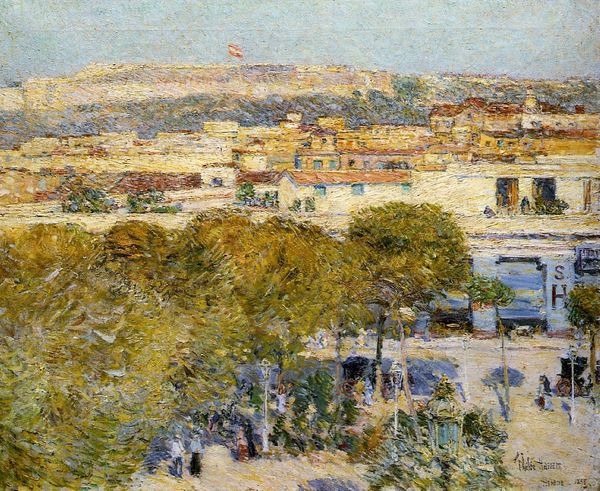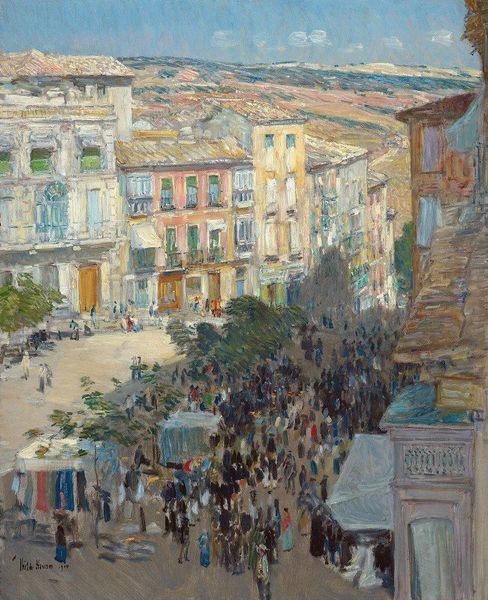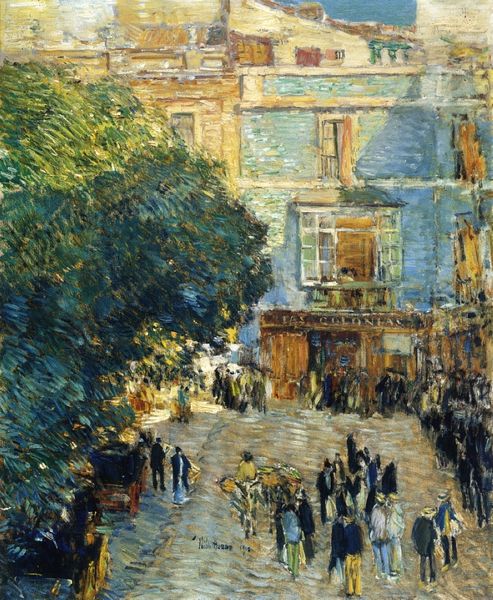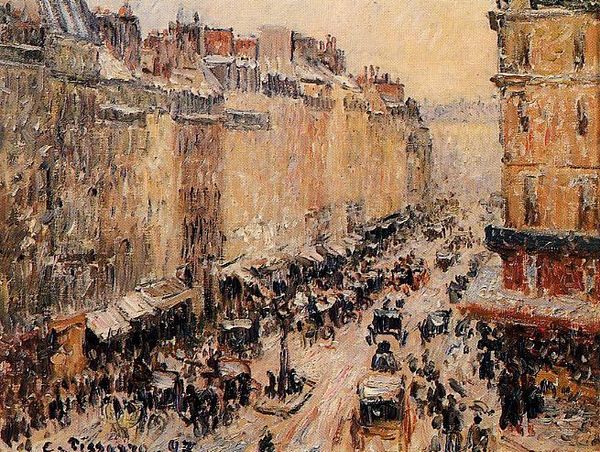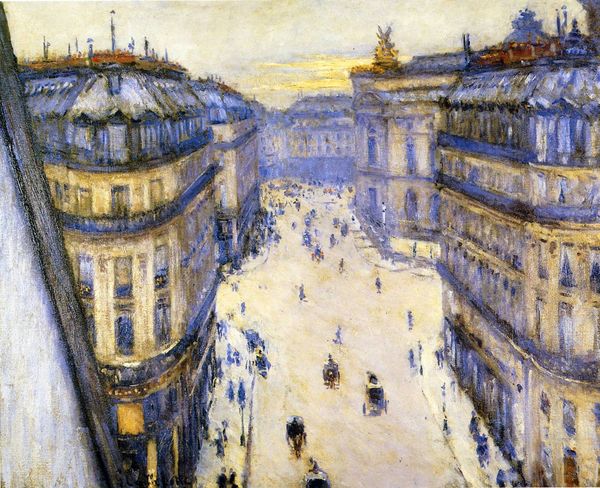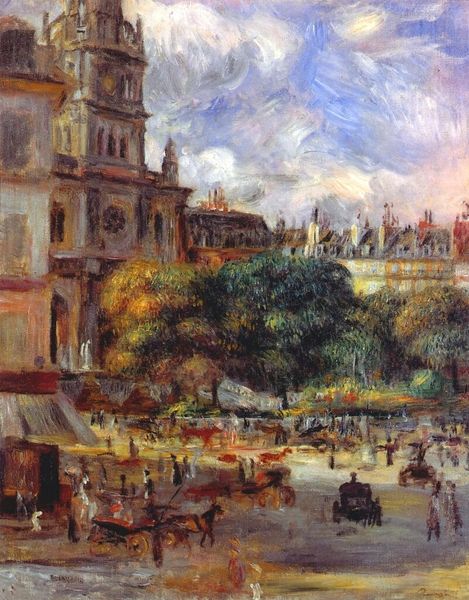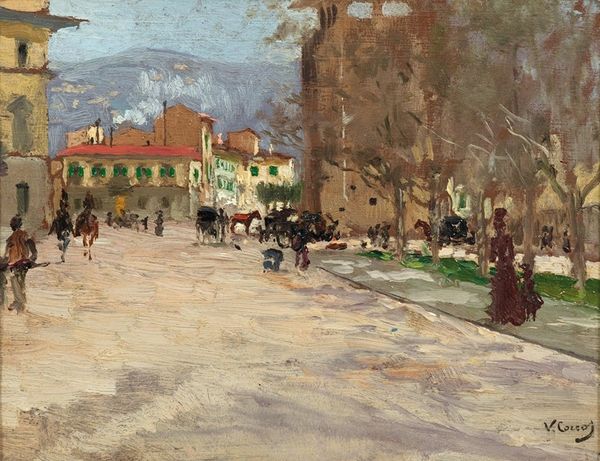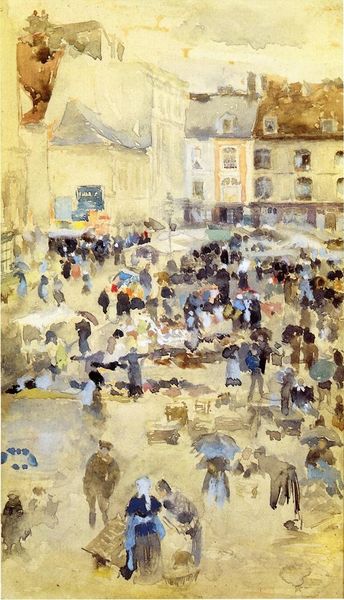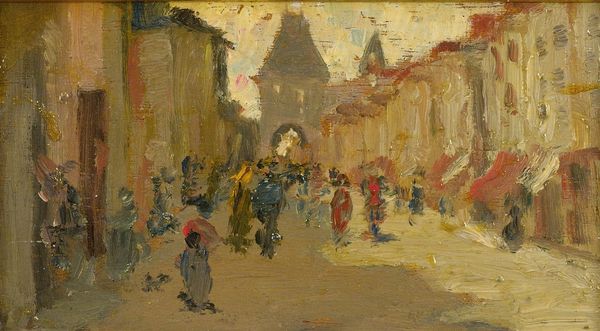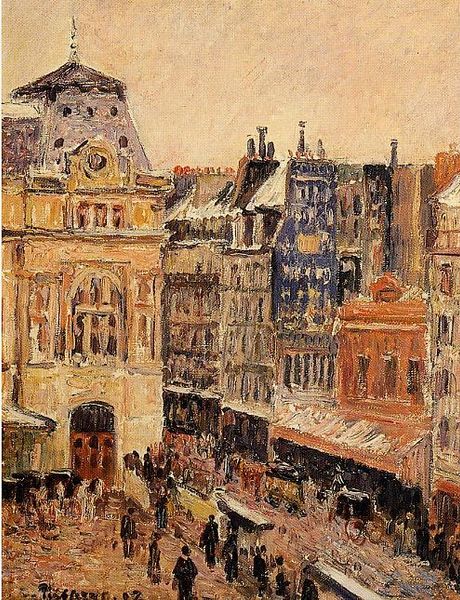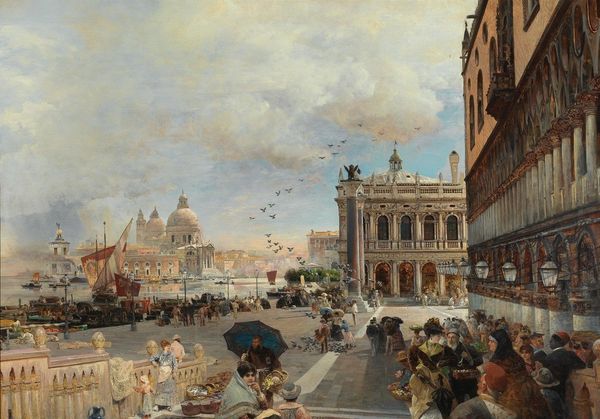
Copyright: Public domain
Curator: Stepping into the late 19th century, we find ourselves gazing upon "Havana," painted by Childe Hassam in 1895. It's an oil on canvas, alive with the energy of a sun-drenched cityscape. Editor: My first thought is warmth—that ochre light floods the whole scene. It's not just visual, but visceral. I can almost feel the heat radiating from the buildings and the street. Curator: Hassam had a knack for capturing the essence of a place, and this is no different. He was part of that Impressionist wave that really wanted to paint what they saw— the light, the movement, the feeling of being there. Think plein-air painting, feeling the sunlight on your face. Editor: The buildings—those boxy structures drenched in yellow ochre –feel almost stacked on top of each other, with their rooftops teeming with figures. I'm intrigued by what it suggests about spatial dynamics during that period. What socio-political conditions allowed Hassam, an American painter, to come to Cuba? Curator: It's true, Cuba in 1895 was on the brink of war and there's a question of his positioning, absolutely. Perhaps, it’s about that very "outsider" perspective that renders Havana this way: bright, busy, but ultimately unknowable. The Spanish flags rippling from the buildings…do they hint at tensions just below the surface? Editor: Those flags certainly create a striking visual effect, dotting the landscape, although somewhat subdued. The brushwork throughout is characteristically impressionistic, isn't it? Curator: Exactly! Short, broken strokes create a sense of shimmering light and movement. And that feeling carries over, too. The piece becomes less about precise representation and more about the artist's sensory experience of the city. Those little figures down below, like busy little ants. Editor: I notice a strong absence of… darkness, let’s say? Even the shadows retain a kind of vibrancy. Does that perhaps flatten the complexities of colonialism and its attendant oppressions under the veneer of Impressionist aesthetics? How does the portrayal of people and place engage with power and representation? Curator: It is a painting that celebrates a moment in time – that beautiful moment before…everything. So there's something bittersweet. As much as it's about light and color, perhaps it is also about the silence that presages an explosion. Editor: Perhaps we're both seeing shadows now that weren’t so evident at first. What seemed purely aesthetic is tangled up in power. Food for thought.
Comments
No comments
Be the first to comment and join the conversation on the ultimate creative platform.
